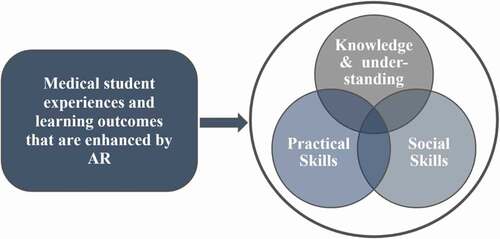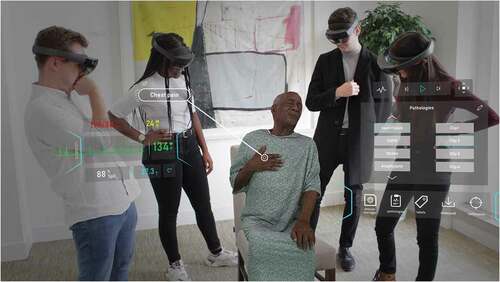Figures & data
Figure 1. The main goals of augmented reality in medical education [Citation16]
![Figure 1. The main goals of augmented reality in medical education [Citation16]](/cms/asset/7926ac09-f8ca-4178-8151-fe0d379f7454/zmeo_a_1953953_f0001_oc.jpg)
Figure 2. Three main domains of medical student experiences and learning outcomes that are enhanced by AR-based programs

Figure 3. The AR app ‘HoloHuman’ showing a virtual cadaver placed on a real examination table. The moderator (shown) is able to interact with the model and user interface through the use of a HoloLens headset. Structures, organs and systems can be examines individually or in combination and are fully supported by visual narrative and digital dissection tools (image courtesy of 3D4 Medical from Elsevier, 2020; https://3d4medical.com/apps/holohuman)

Figure 4. The OculAR SIM AR program to aid optometry students (available on multiple devices, such as tablets and smartphones, subject to licencing conditions). Image courtesy of Apperition (www.appearition.com/deakin-university/), and Peter Bright,School of Medicine, Deakin University

Figure 5. In the HoloPatient system, volumetric 3D video capture of a standardized patient sitting in a chair being assessed by a group of medical students. Students can view the patient and interact with the test results panel and real time vital signs through the use of the Microsoft HoloLens 2. Here the patient describes chest pain associated with myocardial infarction. Published with permission from GIGXR (www.gigxr.com/applications/holopatient)

